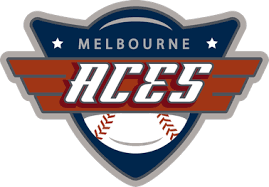
Along with the widely publicised health and fitness benefits, running is an integral component of many sports.
A pair of running shoes “runners” is an essential wardrobe item of athletes. As a piece of training equipment the running shoe’s primary purpose is to protect the foot during the running gait pattern.
Though, how well does it protect the foot and does it actually prevent injuries?
History of running shoes
It is interesting to note that despite advancements in running shoes over the past 40years injury rates have stayed relatively consistent over this period. If we look at a typical running shoe from 40 years ago there are striking differences in the design to today.
They were generally unspecialised from other athletic shoes and consisted of canvas uppers with vulcanized rubber soles. This style of shoe became known as “sneakers” in the US as they were quiet when walking. Their design was simple and similar to shoes such as the “Converse All Star” or “Dunlop Volley” on our shelves today.
The “Jogging boom” of the 70’s and 80’s was influential in the development of the modern running shoe.
It was pioneered by coaches Arthur Lydiard in New Zealand and Bill Bowerman in the U.S in the 1960’s. These men popularised the activity of running at a steady, gentle pace as a form of physical exercise for all.
It led to the international sports footwear industry growing into an estimated US$55 billion industry, with the largest sector being running shoes (Powell, 2014).
Marketing vs Form
Marketers began to realise that the most effective way to sell athletic footwear was to appeal to people’s emotions.
Brand identification with stripes and ticks became one of the strongest factors in shoe selection in a market dominated by superpower brands. However, by the late 1980’s the market demanded a more scientific approach to shoe selection.
Running shoe companies began suggesting that injuries could be reduced by selecting running shoes on the basis of foot arch height.
Three distinct running shoe categories arose:
- Cushioned (designed for high arched feet),
- Stability (normal or medium arched feet), and
- Motion Control (low arches or flat feet).
In the November edition of the Journal of Orthopaedic & Sports Physical Therapy, Knapik and colleagues concluded that the prescription of shoes with elevated cushioned heels and pronation control systems tailored to an individual’s foot type was not evidence based.
This was supported by data from over 7,000 male and female military recruits that after foot examinations were randomised to either an experimental or a control group.
Recruits in the experimental group were assigned motion-control, stability, or cushioned shoes to match their plantar shape, which represented a low, medium, or high foot arch. While the control group received a stability shoe regardless of plantar shape. Injuries during basic training showed no differences between the groups.
In the July 2015 issue of the British Journal of Sport Medicine, Nigg and colleagues reported in the article “Running shoes and running injuries: mythbusting and a proposal for two new paradigms ‘the preferred movement path’ and ‘the comfort filter’, that a runner intuitively selects a comfortable product using their own comfort filter that allows them to remain in the preferred movement path.
This may automatically reduce the injury risk and may explain why there does not seem to be a secular trend in running injury rates.
Despite the evidence, footwear companies’ ranges continue to be based on these categories. Along with the recent rise of two additional categories “minimalist” and “maximalist”.
Observationally in the clinic it is clear that some runners may respond better to a certain shoe design.
However, in a profession based on evidence there are far more proven approaches to treating injuries, than the often heard term “I think I need a new pair of runners”.
Glenferrie Sports and Spinal Clinic is located in Hawthorn. Situated conveniently near public transport and with convenient parking it is central to Camberwell, Kew, Richmond, Toorak and Malvern.
For appointments call 03 9815 2555, or book online here














